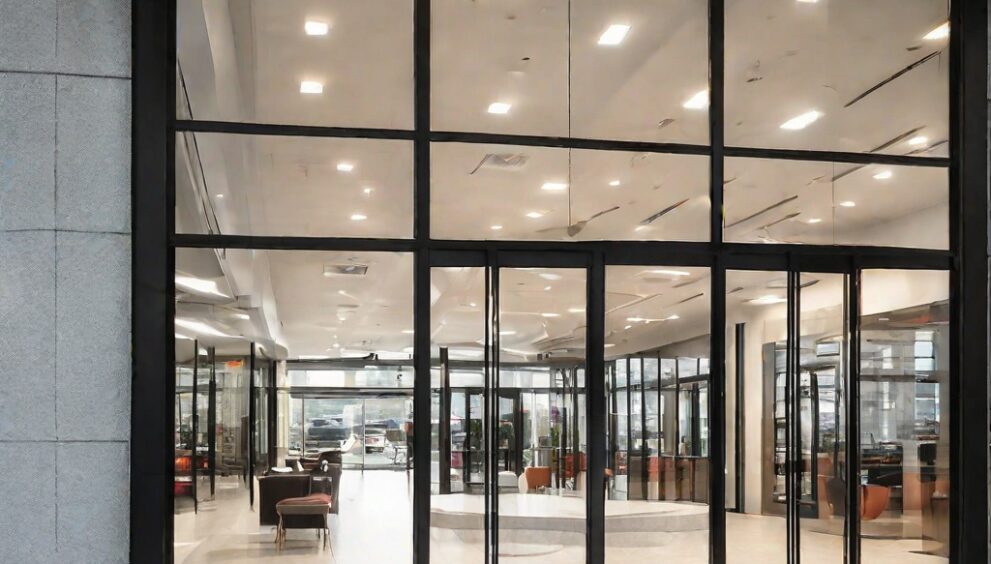How Do Commercial Windows and Doors Enhance Building Security?

In today’s world, where security concerns are paramount, commercial establishments prioritize fortifying their premises against potential threats. Among the various measures taken, securing windows and doors stands out as a critical aspect. Commercial doors and windows serve as primary points of entry and vulnerability in buildings, making them essential components of any security strategy. This article delves into how commercial windows and doors enhance building security, exploring technological advancements, design considerations, and their overall impact on safety.
Introduction To Commercial Windows and Doors
Commercial doors and windows often feature advanced locking mechanisms designed to deter unauthorized access. These mechanisms go beyond traditional locks and bolts, incorporating technologies such as smart locks, biometric scanners, and key card access systems. By implementing these sophisticated locking systems, businesses can exert greater control over who enters their premises, minimizing the risk of break-ins and unauthorized intrusions.
Impact-Resistant Materials
Modern commercial windows and doors are constructed using impact-resistant materials such as reinforced glass and sturdy metals like steel or aluminum. These materials are specifically chosen for their ability to withstand external forces and blunt attacks, providing an added layer of protection against forced entry and vandalism. By investing in impact-resistant materials, businesses can significantly improve the structural integrity of their premises and reduce the likelihood of security breaches.
Surveillance Integration
Commercial doors and windows are increasingly being integrated with surveillance systems to enhance security monitoring capabilities. Surveillance cameras strategically positioned near windows and entry points allow businesses to monitor and record activities in real time, deterring potential threats and providing valuable evidence in the event of security incidents. By combining physical barriers with electronic surveillance, businesses can create a comprehensive security infrastructure that effectively safeguards their premises.
Alarm Systems
In addition to surveillance integration, commercial doors and windows are often equipped with alarm systems designed to detect and deter unauthorized entry attempts. These alarm systems can range from simple sensors that trigger audible alerts to sophisticated setups connected to centralized security networks. By promptly notifying authorities and building occupants of security breaches, alarm systems play a crucial role in thwarting potential threats and minimizing the impact of security incidents.
Access Control Measures
Access control measures play a vital role in regulating entry into commercial premises and restricting access to authorized personnel. Commercial doors and windows can be equipped with access control systems that require authentication via key cards, PIN codes, or biometric credentials. These systems not only enhance security by preventing unauthorized entry but also enable businesses to track and monitor the movement of individuals within their premises, enhancing overall safety and accountability.
Deterrence Effect
Beyond their functional aspects, the presence of robust commercial windows & doors serves as a visible deterrent to potential intruders and criminals. A well-secured building sends a clear message that unauthorized access will not be tolerated, dissuading individuals with malicious intent from attempting to breach the premises. This deterrence effect is integral to maintaining a secure environment and instilling confidence among employees, customers, and stakeholders.
Environmental Considerations
In addition to security and safety concerns, commercial windows & doors also play a role in enhancing environmental sustainability and energy efficiency. Energy-efficient windows & doors help regulate indoor temperatures, reduce heating and cooling costs, and minimize the carbon footprint of commercial buildings. By investing in environmentally friendly building materials and design features, businesses can align security objectives with broader sustainability goals, creating spaces that are both secure and eco-friendly.
Conclusion
Commercial doors and windows form the first line of defense against security threats in commercial buildings. By incorporating advanced locking mechanisms, impact-resistant materials, surveillance integration, alarm systems, access control measures, and fire safety considerations, businesses can significantly enhance building security and protect against potential risks. Moreover, the deterrence effect of well-secured premises contributes to a safer and more secure environment for occupants and assets. As security challenges continue to evolve, investments in robust commercial windows & doors remain essential for safeguarding businesses and ensuring peace of mind.


 English
English 

